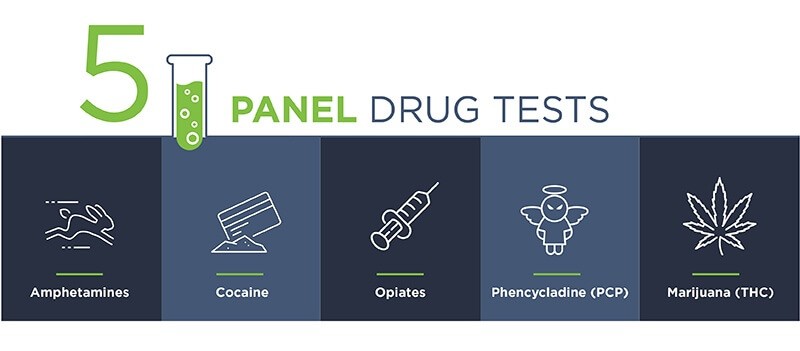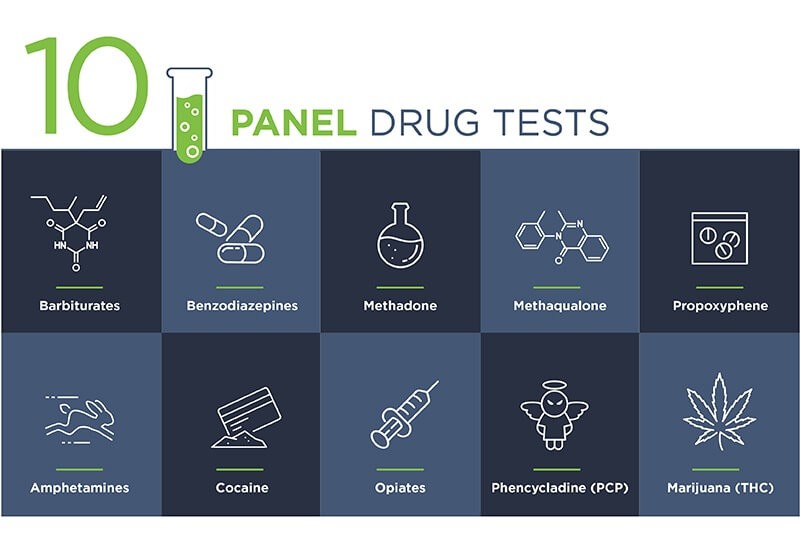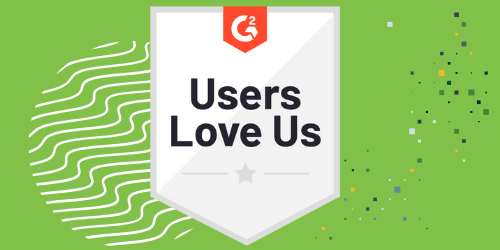What to Do if You Have a False Positive Drug Test
Drug testing for chore candidates and employees is increasingly common, only are not always 100% authentic.
In this weblog, we'll explicate what a false positive is on a drug test; how the drug testing process works; what drugs 5-panel and 10-panel tests observe; the most common causes of a false positive; and how to dispute a false positive drug test .
Employee drug screenings take been standard process for decades in many industries, but the nation's ongoing crisis of opiate and opioid abuse make it a growing focus for employers and Hr professionals across the land. Reports that workers are failing workplace drug tests at the highest rates in over a decade too have many companies revisiting and updating existing policies.
U.S. News and World Written report indicates that, co-ordinate to reports from Quest Diagnostics, positive drug tests had hit their highest rates in more than than a decade, with the states of Oregon, Maine, Vermont, Alabama, Louisiana and Massachusetts topping the list of positive results for urine-based drug tests.
Another challenge that employers now face is the legalization of marijuana for both recreational and medicinal use. Equally cannabis laws have changed effectually the United states, employers are updating their drug screening protocols. Still, employers have a legitimate concern, and an obligation, to protect the wellness and safety of their employees and those they come into contact with.
With increased attending on testing policies, and changing guidance on how to accost testing and responses to test results, comes a demand for greater awareness of the strengths and weaknesses of testing procedures, including the potential for simulated-positive test results that can come with expansion of the type and number of drugs included in pre-employment drug screening programs. False positive drug tests are a manageable element of workplace drug-exam programs.

Why Practise Employee Drug Testing?
Reasons for implementing drug testing procedures vary by employer. Some regulated industries require testing of employees, peculiarly those with jobs that impact public condom. Merely whether mandatory or discretionary, virtually all drug testing addresses one or more of the following concerns:
- Safety. Employees under the influence of booze or drugs are at greater take a chance for industrial accidents, driving infractions and accidents, and other mishaps that endanger them and their coworkers.
- Liability. Intoxicated workers who come up into contact with clients, customers, and the full general public expose their employers to potential legal activity.
- Security. Drug testing tin can help avoid fraud, embezzlement, or other forms of workplace theft past employees trying to finance illicit addictions.
- Reputation. Problems with any of the preceding problems can hurt a company'south good name, equally tin employees who are dumb or intoxicated while representing the company.
Workplace studies accept demonstrated that audio drug-complimentary workplace policies can reduce on-the-job accidents and absenteeism and improve productivity and worker retention.
Importance of a Articulate Drug Exam Policy
When implementing a drug-free workplace policy, it'southward disquisitional, both legally and from an employee-relations standpoint, to set articulate expectations. A well-designed workplace drug policy will explain how and when testing will be conducted, and what the consequences volition be for failing a exam or refusing to take 1. State laws and regulations may too require displaying drug-free workplace policies at worksites.
Drug Testing Process
Drug testing begins with the collection of a specimen—typically urine, though saliva and pilus also may be tested. Collection unremarkably takes place at the test location. Direct observation of a subject during urine drove is mostly forbidden, only technicians may accompany a subject into a restroom, listen as the specimen is collected, bank check its appearance and temperature, and use other methods as precautions confronting specimen tampering or substitution (e.g., requiring a test subject to wear a infirmary gown to prevent concealment of "clean" specimens or adulterants, dying toilet h2o to prevent its use in diluting a specimen, etc.).
Once a specimen is collected, it is typically divided in one-half. I portion is tested, and the other is set aside for use in case of error or contamination, to ostend a positive test result, or to address any challenge to test findings.
What is Detected in a Drug Test
Modern engineering science enables detection of a vast range of substances. Employers in industries where abuse of specific substances is a business organization (makers and sellers of pharmaceuticals or supplements, for instance) tin can order custom tests for nigh whatever substance—if, of course, they're willing to pay for them.
Employers must be aware, though, that certain states and municipalities (including Nevada, Maine and New York City) accept passed laws restricting employers' ability to consider an applicant or employee'southward marijuana use or marijuana drug test result when making a hiring conclusion. New York Metropolis's police is the strictest, prohibiting almost employers from testing job applicants for marijuana altogether. Depending on the specific jurisdiction, employers in sure prophylactic-sensitive industries may be exempt from these restrictions, so exist sure to review the requirements carefully with your legal counsel.

5-Console Tests
The most common drug-testing procedure is the v-panel test used to screen employees in industries regulated by the U.S. Department of Transportation (DOT), including interstate truck drivers, commercial rails and flying crews, and Declension Guard personnel. Often administered in conjunction with alcohol breathalyzer checks, the five-console tests observe the following substances:
- Amphetamines. Stimulants, or "speed," taken in tablet grade, snorted in powder grade or smoked are extremely addictive and can cause sleep disorders, depression and suicidal beliefs, tearing mood swings, and heart attacks.
- Cocaine. Extremely addictive, cocaine when snorted or smoked in crystalline "scissure" grade, it induces euphoria and manic beliefs.
- Opiates. Eaten, smoked, snorted or injected, natural opium, codeine, and heroin are highly addictive narcotics. They render users sleepy or fifty-fifty catatonic, and addicts experience severe pain and nausea when deprived of the drug; overdoses can be lethal.
- Phencycladine (PCP). Highly unpredictable "angel dust" tin can induce hallucinations, paranoia, and violent outbursts.
- Marijuana (THC). Smoked, "vaped," or eaten, pot slows reflexes and reaction times, and tin can reduce attention span and alertness. While not physically addictive, information technology tin can be habit-forming. Effective at reducing nausea in chemotherapy patients and reducing some forms of chronic pain and anxiety, marijuana has been cleared for medical use in 33 states, and its recreational use is permitted in 10 states and the District of Columbia. While remaining classified as an illegal controlled substance under U.Southward. federal law, in states where marijuana has been legalized, employers may opt for a 4-panel drug test that eliminates the marijuana screen.

x-Console Tests
More comprehensive 10-panel tests are gaining popularity with employers. In addition to the substances included in the 5-panel test, the ten-panel examination detects five unremarkably driveling prescription drugs:
- Barbiturates.Known as "downers" or allaying-hypnotics, these drugs are used to aid sleep and reduce anxiety. Overdoses are lethal. Barbiturates are extremely dangerous because users' bodies arrange to them over time, so that continually higher dosages (eventually approaching lethal levels) are needed to feel their furnishings.
- Benzodiazepines.A family of tranquilizers that includes Xanax and Valium, these drugs are amongst the most unremarkably prescribed depressant medications in the United States. They are also habit-forming and widely driveling.
- Methadone.A synthetic, narcotic painkiller, it is used medically for pain relief and too as a replacement for morphine and heroin in addicts trying to wean off those drugs. The drug shares many effects and characteristics of morphine, and is also subject field to abuse.
- Methaqualone.Too known as Quaaludes, this barbiturate-like drug depresses the central nervous system. Abusers may appear drunk, with slurred speech and unsteadiness or even incapacitation. The drug is highly addictive and overdoses tin be lethal.
- Propoxyphene. Likewise known by the trade name Darvon, is no longer sold legally in the US, but information technology persists as a drug of abuse. Used to care for mild to moderate pain, it tin cause heart damage, even at therapeutic doses.
Additional panel tests tin can be ordered at many labs to examination for specific substances, including opioids such every bit Oxycontin and Oxycodone, which behave similarly to opiates in the body (and share their addictive nature), but are not detected by standard opiate tests.
False Positives Explained
Console tests utilise paper strips impregnated with antibodies that react and modify color in the presence of a drug or itsmetabolites—substances produced when a drug breaks down in the body. The console tests, also known every bit immunoassays, detect drugs much the same fashion habitation pregnancy tests change color in the presence of pregnancy-related hormones.
Panel tests are quick, effective, and easy to conduct, just they are subject to "false positives," which appear to detect a substance that isn't really establish in the specimen. False positives occur when a substance in the specimen is chemically similar to the target substance. These "imposter" substances tin be byproducts of prescription or over-the-counter medicines, nutritional supplements, and even sure foods.
Makers of immunoassay test materials continually refine the sensitivity of exam panels to reduce the likelihood of false positives. Nevertheless, the vast (and growing) number of substances, particularly prescription drugs, that tin can masquerade every bit illicit drugs or their byproducts means false positives will always be an issue with immunoassay testing.
What Can Cause a False Positive on a Drug Exam?
Over-the-counter (OTC) and prescription drugs have the potential to cause unexpected results in a urine drug test, including painkillers like Advil, Motrin and Aleve; cold remedies like Benadryl; nasal decongestants like Sudafed; coughing suppressants like Robitussin and Delsym; sleep aids similar Unisom, Tylenol PM and Advil PM; diabetes medications like Metformin; and antidepressants like Prozac, Zoloft and Seroquel. The table below is just a sampling:
| Drug-Testing Target | Potential Source of Fake-Positive |
|---|---|
| Amphetamine | Cold remedies, hay fever remedies, nasal decongestants, diet pills, fluoxetine (Prozac), methylphenidate (Ritalin), bupropion (Wellbutrin), beta blockers (claret-pressure remedies) |
| Barbiturates | Sleep aids, ibuprofen (Motrin/Advil), naproxen sodium (Aleve) |
| Benzodiazepines | Ibuprofen (Motrin/Advil), sertraline (Zoloft) |
| Cocaine | Coca tea |
| Marijuana | Ibuprofen (Motrin/Advil), hemp nutrient products |
| Methadone | Quetiopine (Seroquel) |
| Opiates/morphine | Poppy seeds (no longer an issue with latest generation of panel tests) |
| Phencycladine (PCP) | Antihistamines, dextromethorphan (cough suppressant), ibuprofen (Motrin/Advil), diphenhydramine (Benadryl) |
Proof-positive: Testing and Re-testing
To safeguard confronting false positives, drug testing labs re-examination specimens that return positive console-tests to dominion out the possibility of a false positive. The confirmation tests use testing methods far more sensitive than panel tests—typically gas chromatography–mass spectrometry (GC-MS) or high performance liquid chromatography (HPLC).
These examination methods are extremely precise and can distinguish between target substances and chemical imposters that tin fool panel tests.
The Role of the Medical Research Officer (MRO)
A medical enquiry officeholder (MRO) is a physician with expertise in substance abuse and drug testing. At a drug exam lab, the MRO is responsible for reviewing all test results, ensuring that specimens are handled securely from the time of collection through the testing procedure, flagging any indication of specimen tampering or adulteration, and documenting all testing procedures.
In the instance of a positive test upshot, the MRO may contact the test subject to bank check on whatever prescription medications, nutritional supplements, or over-the-counter medications they may exist taking. In calorie-free of this information and the results of a GC-MS or HPLC confirmation test, the MRO can declare an authentic positive test result "false" if it detects a medically legitimate drug.
Finally, the MRO makes a final certification equally to whether the individual being tested passes or fails. Results are typically returned to the employer within one to two business organisation days. Employers conducting in-firm testing volition need to hire or contract with a trained MRO to ensure all testing procedures are ironclad and can withstand any legal challenges.
How to Dispute a False Positive Drug Test
In cases where an employee or job candidate disputes a positive examination result, their recourse varies from state to state. Unionized worksites may file grievances on behalf of an employee. In some jurisdictions, employers may requite them the option of repeating the test using the portion of the original specimen that was set aside after drove. In some jurisdictions, the individual may take to pay for the second examination procedure themselves.
Annotation that companies with fifteen or more than employees are subject to the Americans with Disabilities Deed (ADA), which includes some addictions among the atmospheric condition for which employers must provide reasonable accommodations. Before drug-testing employees who are subject to the ADA, employers should be prepared to offer any required accommodations, which may include granting leave fourth dimension for employees pursuing counseling or rehab.
As long as these requirements are met, the combined safeguards of a certified testing lab, verification of positive panel-test results with GC-MS or HPLC testing, and oversight by a qualified MRO make workplace drug testing highly reliable—and defensible in the event of whatever legal challenges.
Fake-positives are par for the course with workplace drug testing, merely a well-designed and implemented testing policy tin can minimize their touch on drug-gratis workplaces.
Additional Resources
- A Breakdown of Drug Testing Costs for Employers
- Pre-Employment Drug Test Laws Explained
- Negative or Positive? How to Read Employees' Drug Test Results
- Consequences of a Failed Drug Test: Options for Employers
- Become started with GoodHire's Employment & Pre-Employment Drug Tests

Disclaimer
The resource provided here are for educational purposes just and do not constitute legal communication. We suggest you lot to consult your own counsel if you have legal questions related to your specific practices and compliance with applicable laws.
chumleythicithe2002.blogspot.com
Source: https://www.goodhire.com/blog/the-truth-about-false-positives-and-employment-drug-screens/

0 Response to "What to Do if You Have a False Positive Drug Test"
Post a Comment